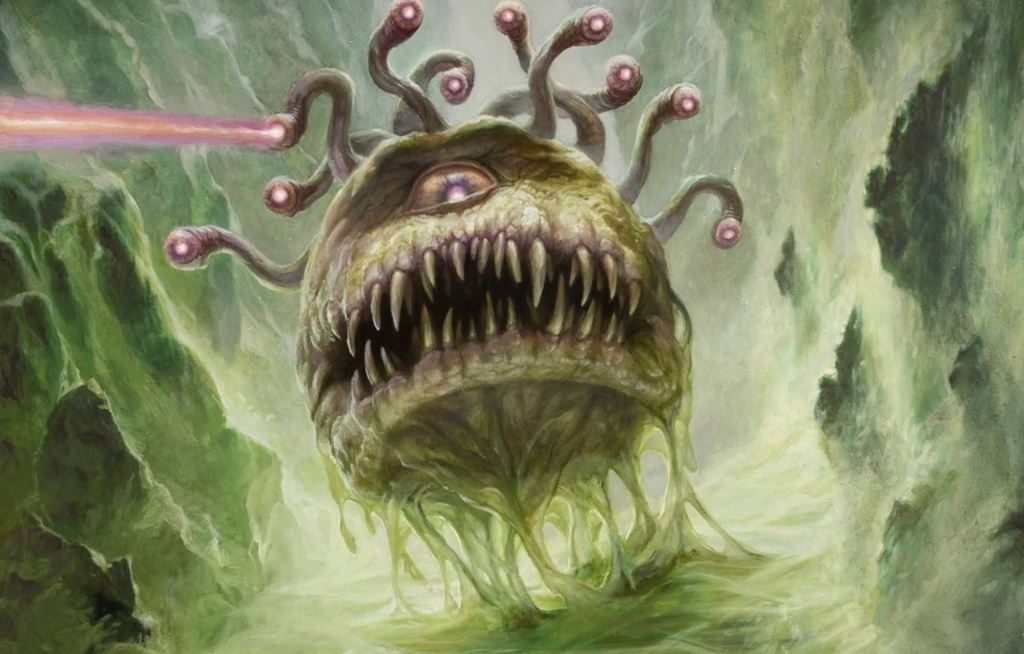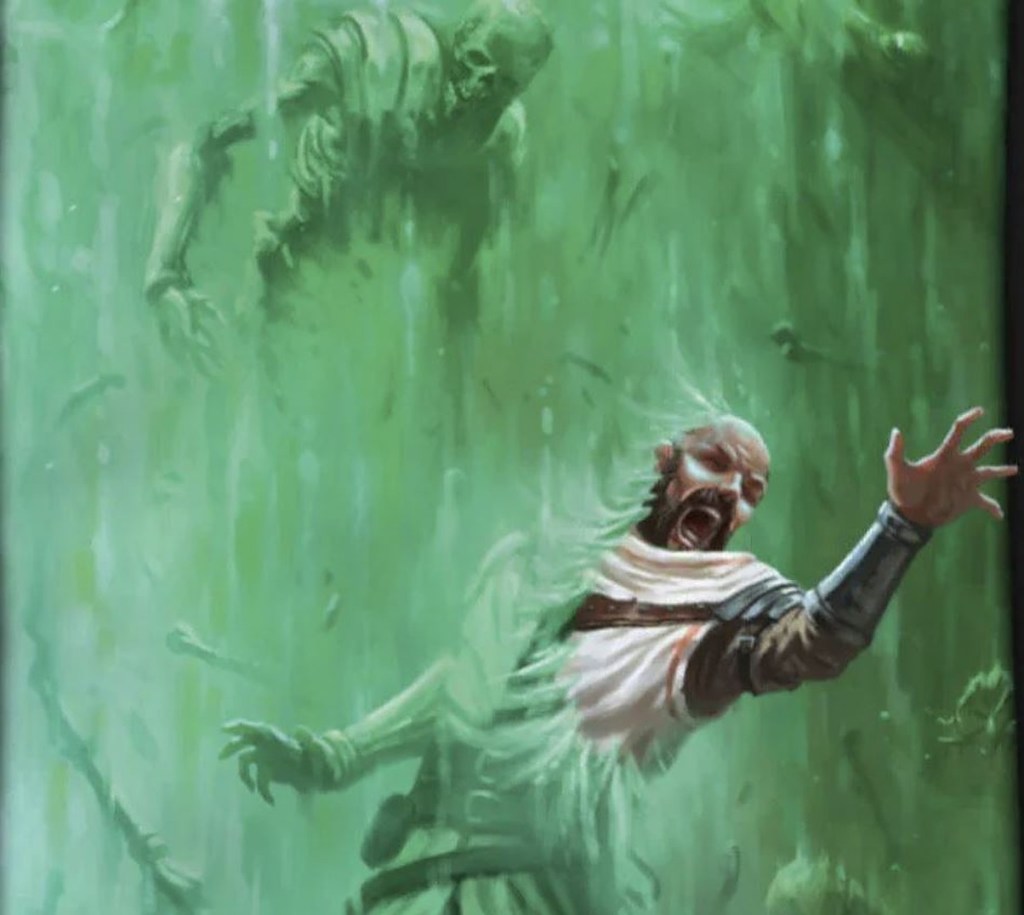Mind you, a Tarrasque isn’t a god. It’s not even particularly intelligent. It’s a lizard-like creature of titanic proportions, armored with a thick carapace that’ll slow down almost any party of adventurers. Like Dune’s sandworms, it’s a force of nature that rises out of its slumber only to destroy everything around it. It’s so difficult to fight that it’s never been featured in a major video game or even a tie-in novel. It exists as an “oh crap” device; a Godzilla-level terror that only the luckiest and most prepared parties can hope to defeat. Even then, they probably won’t. The lore of the Forgotten Realms goes so far as to suggest that there’s only one Tarrasque alive at any time, and it may even be a weapon left behind by old gods.

Mind Flayers (Illithids)
The Mind Flayer is one of D&D’s core monsters. It’s a recognizable monstrosity that appears throughout the franchise multiverse, including the sci-fi-themed Spelljammer setting. Intelligent, telepathic spellcasters with rubbery, octopus-like features, their design was clearly inspired by H.P. Lovecraft’s work. Actually,m Gary Gygax was reading a Brian Lumley novel and came up with Mind Flayers on the spot.
Mind Flayers’ lore also borrows from Lovecraft’s Mi-Go and the Mi-Go brain cylinders. Mind Flayers even have a ruling class of Elder Brains that are kept safe within their secret cities. Their in-universe origins are filled with troubling uncertainties. They’re either alien refugees from a future they’ve forgotten, or some terrible evolution now scattered through time and space. There’s at least one citadel of the Mind Flayers in Faerun, Oryndoll, deep in the Underdark. As an enemy, they’re horrifying brain suckers that require skill to defeat. As a species, they’re a fascinating look at some of the darkest corners of D&D lore.

Beholders
Possibly the most well-known D&D creature is the Beholder: a fleshy, bulbous thing with way too damn many eyes. Depending on the subspecies — there are dozens of them, including an Eyeball cutie wizards use as a familiar — it can have as many as eleven eyestalks, in addition to a larger eye typically set in the center mass.
The beholder is the face of the franchise with a face only a mother could love. Now try to not think about how baby beholders are made. It’s an original monster with no historical or mythological genesis rather than the implications of the common phrase “beauty is in the eye of the beholder.” Created by Gygax’s friend, Terry Kuntz, it wound up on the cover of one of the earliest official D&D supplements, Greyhawk. The beholder straddles (wobbles?) the line between Gygax’s home games and the era when Dungeons & Dragons became a tabletop force. There it floats, watching it all, and stirring itself to fight with a variety of different abilities, one for each unblinking eye.

Gelatinous Cube
The Gelatinous Cube is another Gygax original. It’s a geometric ooze vaguely inspired by amoebae whose critics typically miss the point. Yes, they’re slow and stupid, but the cubes developed to fit into, and then reshape themselves inside of, standard dungeon corridors. This makes them not just an annoyance, but a great way to lose a favorite piece of gear. Or your life.








